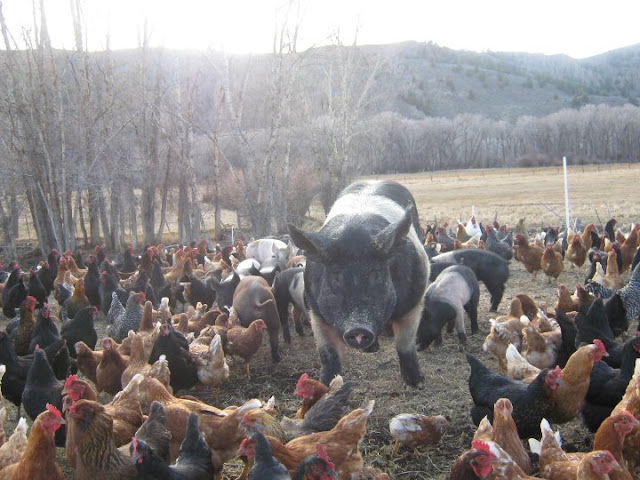Currently, the media and much of the public use the terms climate change and global warming interchangeably. It seems that climate change has become a more acceptable phrase to a larger group of people than global warming. Climate change seems to connote less political rancor. There are other differences in the terms however, NASA notes that, “To a scientist, global warming describes the average global surface temperature increase from human emissions of greenhouse gases….Global warming refers to surface temperature increases, while climate change includes global warming and everything else that increasing greenhouse gas amounts will affect” (NASA).
Climate change is due to man-made influences. Although there is debate about the impacts of climate change and its causes, much of the debate appears to be politically and financially motivated (Brennan and Expose Exxon). The oft-cited Baliunas (2002) clearly misrepresents and misinterprets much of the literature on climate change and global warming. Much of the paper has been refuted and several editors have resigned over the paper (Goodness 2003). While there may be valid scientific debate about what exactly the impacts of climate change will be, few doubt that there will be serious impacts. The International Panel on Climate Change has submitted significant research and data on climate and finds that: “attribution of anthropogenic climate change must be pursued by: (a)
detecting that the climate has changed (as defined above); (b) demonstrating that the detected change is consistent with computer model simulations of the climate change ‘signal’ that is calculated to occur in response to anthropogenic forcing; and (c) demonstrating that the detected change is not consistent with alternative, physically plausible explanations of recent climate change that exclude important anthropogenic forcings….The common conclusion of a wide range of fingerprint studies conducted over the past 15 years is that observed climate changes cannot be explained by natural factors alone. A substantial anthropogenic influence is required in order to best explain the observed changes. The evidence from this body of work strengthens the scientific case for a discernible human influence on global climate change” (IPCC 2007, 103). The counter arguments to refute climate change seem to lack significant scientific backing and significant basis in reality much of the argument appears to be politically and financially motivated.
Global warming is largely due to man-made influences. According to NASA (2), the global average temperature has increased 0.7 to 1.4 degrees since the late 1800’s and states that most experts estimate the average temperature will continue to rise another 2.5 to 10.4 degrees by 2100. The rate of increase appears to become greater over time. NASA (2) attributes global warming to human activities such as the burning of fossil fuels. Additionally arguments that the earth has experienced significant cooling rates have been refuted. NASA (3) reports that David Easterling of the U.S. National Climate Data Center show that naturally occurring periods of no warming or even slight cooling can easily be part of longer-term pattern of global warming. Easterling and Wehner found that “it is possible, and indeed likely, to have a period as long as a decade or two of ‘cooling’ or no warming superimposed on a longer-term warming trend.” Although global warming may not always continue on a rising temperature trend over the long term it appears be a significant trend. The International Panel on Climate Change noted that “At the time of the TAR scientists could say that the abundances
of all the well-mixed greenhouse gases during the 1990s were greater than at any time during the last half-million years and this record now extends back nearly one million years (Section 6.3). Given this daunting picture of increasing greenhouse gas abundances in the atmosphere, it is noteworthy
that, for simpler challenges but still on a hemispheric or even global scale, humans have shown the ability to undo what they have done. Sulphate pollution in Greenland was reversed in the 1980s with the control of acid rain in North America and Europe and CFC abundances are declining globally because of their phase-out undertaken to protect the ozone layer. (IPCC 2007, 100). It seems that we have the ability to reverse the impacts of fossil fuel burning if changes are made. Global warming would appear to be a clearer trend that could be agreed upon as compared with climate change. Certainly though scientists and politicians can and will interpret facts differently. It is important to note that whether we can agree on global warming or climate change we should be able to agree that there will be some affect from the increased burning of fossil fuels over past 100 years. We may not agree on what the impact or change is but there will certainly be some impact. The evidence from credible scientific sources clearly states that the earth is experiencing a significant warming trend over the past 150 years and that the climate is being impacted by this change.
References
Baliunas, Sallie. 2002. Warming up to the truth: The real story about climate change. http://www.heritage.org/Research/EnergyandEnvironment/
HL758.cfm
Brennan, Phil. 2008. What global warming? Such as it was is over. http://www.globalresearch.ca/index.php?context=va&aid=9644
Easterling, David and Michael Wehner. 2009. Is the climate warming or cooling? Geophys. Res. Lett(36).
Expose Exxon. Global warming deniers and ExxonMobil. http://www.exxposeexxon.com/facts/gwdeniers.html
Goodness, Clare. 2003. Stormy times for climate research. Scientists for Global Responsibility. Newsletter 28, November 2003. http://www.sgr.org.uk/climate/StormyTimes_NL28.htm
International Panel on Climate Change. 2007. http://www.ipcc.ch/pdf/assessment-report/ar4/wg1/ar4-wg1-chapter1.pdf
National Aeronautics and Space Administration (NASA 1). What’s in a name? Global warming vs. climate change. http://www.nasa.gov/topics/
earth/features/climate_by_any_other_name.html
National Aeronautics and Space Administration (NASA 2). http://www.nasa.gov/worldbook/global_warming_worldbook.html
National Aeronautics and Space Administration (NASA 3). http://www.nasa.gov/topics/earth/features/upsDownsGlobalWarming.html

